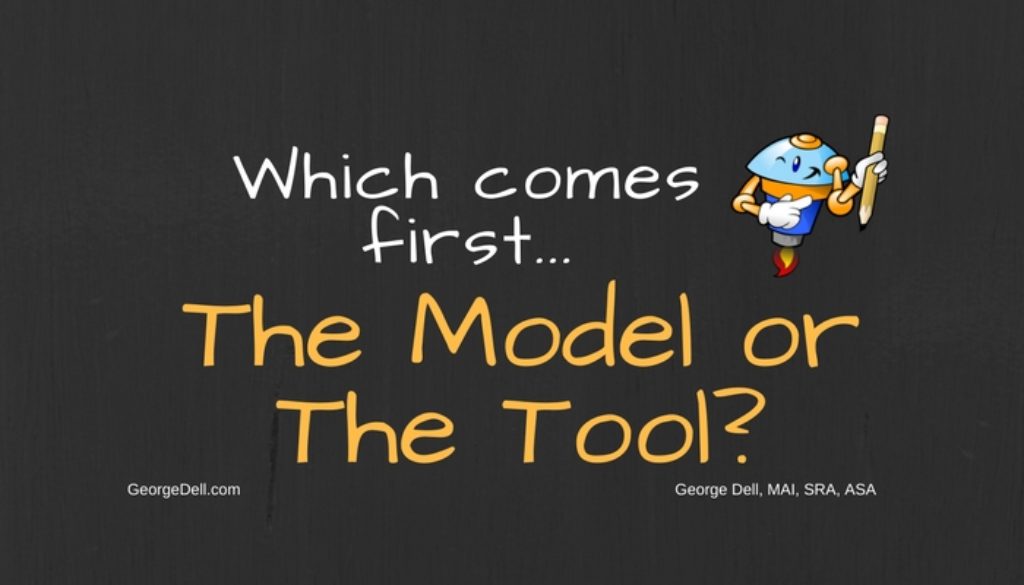Which comes first?
The model tells us how. The tool tells us what. The more important may be the why. Why use a model? Why use a tool?
Last Friday, December 8, we gave the first ever class on R for Appraisers. R is the tool. R is too cool. It’s clearly the toolbox of the future. But the emphasis is on the model. The Asset Analyst of the future must carry two things: the toolbox, with the analytic tools inside; and the brainbox, with the model knowledge inside.
In my years of bringing modern technology to the profession, I’ve always been conflicted. Teach the cool colorful visual tool? Or teach the importance of the model? It is more fun (much more fun) to show graphs, colors, visuals with promises of instant results. The tool is cool. Either we buy it (like “appraiser software”), or get it for free, (like open-source software). My concern has long been the discovery that many cool tools soon become tools for fools. Misused or abused, to mislead the client; or worse, mislead the appraiser.
I have seen some wonderful tools become tools to fool. The DCF (discounted cash flow) model was first used well, then abused, then sometimes even banned. Some were not willing to learn what a DCF really did. How it worked. The assumptions. The speculative growth rate and “terminal cap rate.” It was wonderful. You could really wow them, and meet the “expectations of parties who are regularly intended users for similar assignments.” Best of all, because everybody was doing it, you were doing what an “appraiser’s peers’ actions would be.” Trueness and sureness are not the goals! The goals are what clients want, done the way everybody does it.
We’re taught that the valuation process is a model. Within that there are sub-models, called the cost approach, the income approach, and the comparison approach. These models have existed for many years. Then new tools came along. We got data, we got DCF, we got clever statistics, we got regressed. The model is different. It’s what we sell. We sell our ability to apply the right model to the right problem. This is what’s in the “brainbox.”
But all these new technology tools assume the old “appraisal” model is required. It’s what clients expect. It’s what our peers do. It’s what USPAP indicates.[i] It’s what our classes teach.
So are we a tool school? Or a model school?
What we showed Friday, in San Diego, in the R for Appraisers class, is the tool of the future. But it is based on a change. A change, necessitated by the changes in technology. A paradigm shift. It has been called “The New Valuation Modeling Paradigm.”[ii]
The model takes the lead. The tool enables the analyst.
The valuation profession must adapt to and exploit the current technology, the new tools, and new ways of thinking. The profession, as a whole must take the lead to bring asset realities, risk and reliability measures and data-stream delivery to the fore. This, to serve our underlying purpose: The Public Good.
[i] USPAP (Uniform Standards of Professional Appraisal Practice) (U.S.), Scope of Work Rule, Acceptability Section. There are no known objective standards for reproducible asset analysis in the US.
[ii] Marvin Wolverton, MAI, PhD, in The Appraisal Journal, Spring 2014, letters to the editor. Dr. Wolverton is the author of the Appraisal Institute book, An Introduction to Statistics for Appraisers.

Is Appraisal Inherently Biased? - George Dell, SRA, MAI, ASA, CRE
February 8, 2023 @ 10:36 am
[…] or unintentional (unconscious). Analytic bias itself can come from two parts of the valuation model: 1) bias in the data selection; and 2) bias in the model/algorithm […]